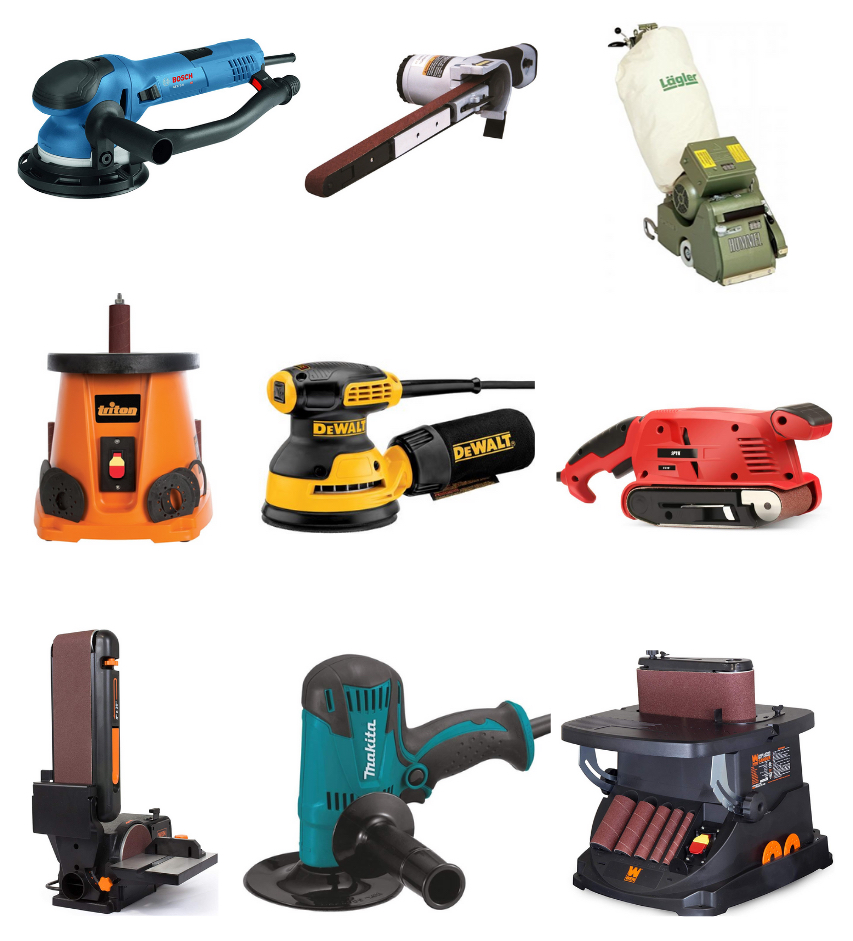Sanders are a type of tool that can smooth any metal surfaces or wood. These machines are very useful in woodworking because they make smoothing so effortless and much faster. However, since there are various types of sanders available in the market, you might be having a hard time choosing what type of sanders you need to use especially if you’re a beginner.
For example, if you want to round off the corners of your tabletop, it would be inappropriate to use a belt sander. Belt sanders are generally too powerful and too bulky to handle such fine tasks as the one mentioned. In this case, it is much better to use a random orbital sander or a small palm sander because belt sanders can take off too much and could destroy or damage your wood piece.
So, if you’re still on the beginner side of the spectrum and you are looking for a type of sander that will work best according to your project, this is the perfect article for you!
This article will present different types of sanders and how and when you should use them. This article has also done some research on some factors that you need to consider when deciding to buy a sander.
Interested to know more? Read on and you’ll get more clarity in a few minutes.
Here’s what you need to know about Different Types of Sanders
There are 4 types of sander options you can choose from depending on the type of woodwork you need to accomplish. These handheld varieties are guaranteed to make woodworking easier for you:
- Belt
- Random Orbital
- Sheet
- Detail
The sander tools mentioned above have multiple similarities and differences. This will be talked about in the next few sections so stay tuned!
There are different types of benchtop and floor sanding machines available, too. But these types are best saved for the next post. This article will solely focus on handheld sander machines first.
If you are new to the woodworking industry, sanders are one of the power tools that could help you push through because they make smoothing surfaces an easy thing to do. It’s a good thing if you are already familiar with these tools. But, if you are still a beginner in the woodworking industry, familiarizing yourself with different types of sanders will help you level up your knowledge and skill set.
Belt Sander
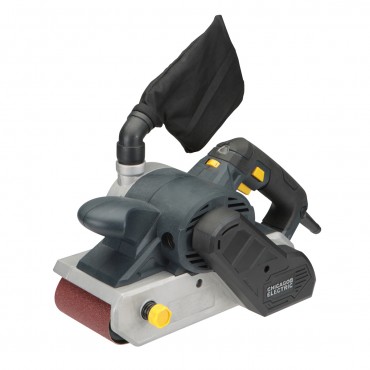
One of the most popular handheld sander machines is the belt sander. A belt sander has a rougher grift which would help remove a ton of wood a lot quicker and easier. This is a must-have tool in your workbench because it has certain abilities that will work better than any other tool you choose to use.
You can use the sander tool on a glue-up, rough tabletop. This power tool also works best on sanding large pieces such as 75 to 100 feet of a handrail on a cedar piece.
The list below contains some information regarding the belt sander:
- The belt sander can remove massive amounts of wood much faster. This is because of the speed at which the belt is moving and its large contact area.
- To run a belt sander, you can use 2 to 3 pulleys. There are a variety of sizes of belt sanders but the most common sanding surface area is around 3 to 4 inches in length and 6 inches wide.
- A lot of woodworkers have experienced mishandling of the belt sander. If you don’t use this power tool appropriately, the belt sander can leave deep grooves or even scratches in the wood you are working on. The proper way of handling the belt sander is to use it where the belt is moving, which is parallel with the grain of the wood.
- Since there is so much material that is being removed, belt sanders can accumulate a ton of dust particles in thair. To address this concern, some models of belt sanders are innovated with ports that can efficiently extract dust.
Random Orbital Sander
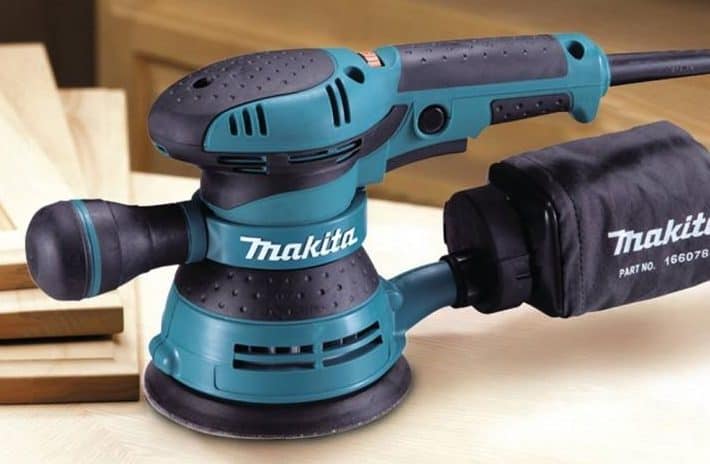
Random Orbital Sanders are one of the best sander tools that are very versatile and functional. You can use it for most of the woodwork projects you would come in contact with.
In comparison to the belt sander, random orbital sanders are generally safer to use and a lot cheaper to buy. These sanders also work best on projects that need to be refinished like sanding down some paint or some other finishes. If you are a DIY enthusiast and you have plans of remodeling your home and building some furniture, a random orbital sander is such a perfect tool to accomplish your DIY dreams!
Here is some information about the Random Orbital Sander:
- To sand, this power tool uses an eccentric orbital motion. Orbital motion, compared to circular motion that simply rotates around circularly, orbits around a center position. In this way, it can eliminate any scratches on the surfaces.
- In order to facilitate dust removal, the sandpaper of a random orbital contains holes in the surface. You can also hook other systems or a shop vac to the sander. This can improve the sanding efficiency and removes dust present in the air.
- Changing the pads in the sandpaper has never been quicker and easier when using the random orbital sander. This is because of the velcro hook and loop system incorporated in the machine to which the sandpaper is attached.
- However, since the random orbital sander has a rather round nature, it will be difficult for you to get into the corners of the wood if you ever deal with one.
- Other than that, if you ever worry about wood grain direction, which is the texture that is seen on the cut wood surface, the random orbital sander is prepared and equipped for that. Fewer worries, less hassle!
Sheet Sander
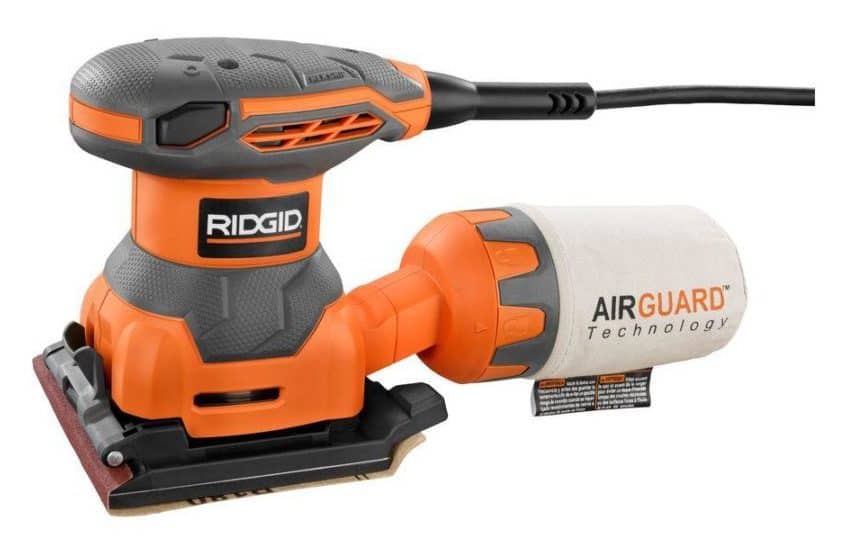
Sheet Sander is like a sister or a cousin of the random orbital sander since it works in a familiar and similar fashion. However, the sheet sander functions in a few crucial ways and is also designed differently.
In comparison to the random orbital sander, which is round, the sheet sander is square or rectangle. Also, instead of using the velcro hook and loop system to attach the sanding pads, this power tool uses ½ or ¼ of a standard sheet of sandpaper which is then clipped in place at the bottom of the sander.
Here are some other notable details about the sheet sander:
- If you worry about getting into the corners of your wood piece, having a sheet sander should take that worry away! The square or rectangular shape of this sander allows the machine to easily get into the corners.
- The sheet sander allows a variety of motion such as circular motion, linear motion, or both (by toggling up the switch between each mode). If you wish to have a back and forth motion of the sanding, it is necessary to do it in line with the wood grain.
- Unlike the random orbital sander’s circular motion, the circular motion of the sheet sander is different. This mode is purely a round motion. However, it has the possibility of leaving scratches in the wood since it works aggressively. But, it gets the job done and will certainly remove the wood quickly.
- The sheet sander is easy to handle and is also pretty small. These characteristics make it not only handy but also versatile.
- The dust collection is not common in sheet sander models unlike most types of sanders. However, the dust collection system is also available in some models.
- Large sheet sanders are perfect for finishing large and flat surfaces. A huge tabletop, for example.
Detail Sander
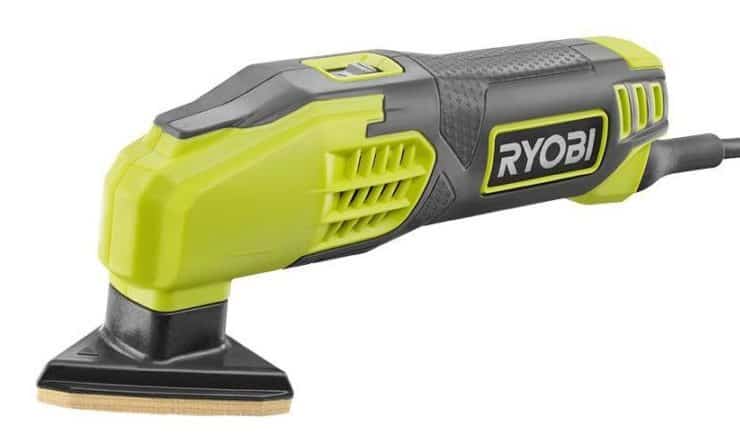
The name “detail” says it all. This power tool is designed to get into small spaces and tight corners where others can’t reach through the small triangular pads incorporated in the machine.
If you wonder where you think you could use the detail sander for, this sander is best to have when you’re dealing with cabinetry, furniture work, and other woodworks that need sanding in the small corners and details. This power tool is very helpful when you need to round off some imperfections on your chair spindle or even sand a tight corner on your tabletop or table apron. Since these tasks need to be done with such care and precision, the detail sander is the perfect tool to accompany you.
Here are some of the information about the detail sander:
- Typically, the triangular sanding pads are stuck into the machine through an adhesive.
- The detail sander has the same motion as the random orbital style. Consequently, the grain direction of your wood doesn’t matter.
- The sanding pads have small sizes. These characteristics allow the detail sander to get into the tight corners and spaces of the wood.
Things to Consider in Regards to Sanders
There are several considerations that you need to take into account when purchasing the perfect type of sander machine for you. The sander should be paired with the type of woodwork you choose to do or are dealing with.
Below are some of the factors you should consider:
Dust Collection Ability
If you have more budget for your sanding machine, it is recommended to purchase a sander that has a good dust collection port. This is because sanding your wood piece will fill your workspace with sawdust so it’s better to have a dust collection port incorporated into your sanding machine. This feature will also cause you some lesser cleanup.
Having a sander that has a good dust collection system will also result in a much more effective and efficient sanding. It is harder to sand the wood when your tool has no vacuum because dust can collect on the wood piece and the sandpaper.
Compatibility
You want a sander tool that matches well with what type of work you are working on. Some brands already have matching accessories like cordless batteries and dust port hookups.
Not only that, but it is also good to know if the sandpaper of your machine is available in your local store, online, or both. That way, you will have an idea where you can purchase in case you run out of sandpaper and you need a refill.
Conclusion
Get the sander machine according to what type of projects you will be or are currently working on. Getting a random orbital sander is recommended for most types of woodwork. However, if you need specific requirements for your wood piece, there are many options of sander machines you can choose from to help you achieve what you desire for your wood.
There are different models of sander machines available in the market today. Each type works similarly and differently from others. It is also best to understand the pros and cons of each tool and determine what type of tasks you plan on completing. It’s up to you to choose which type of sander you will be purchasing according to the type of work you are dealing with.
